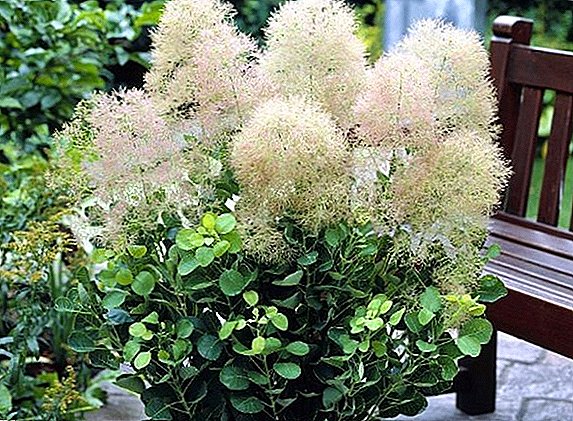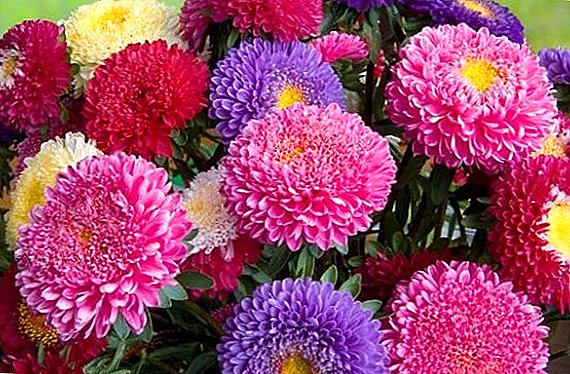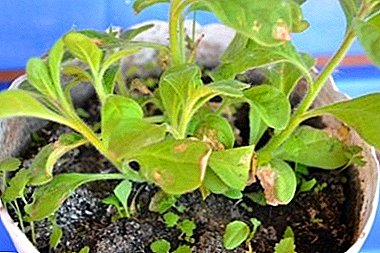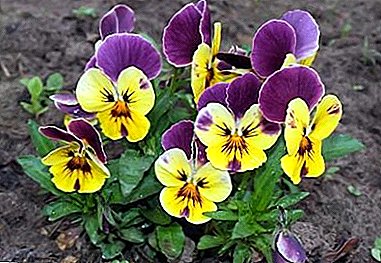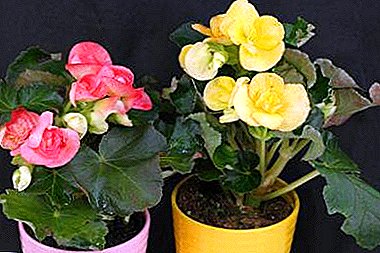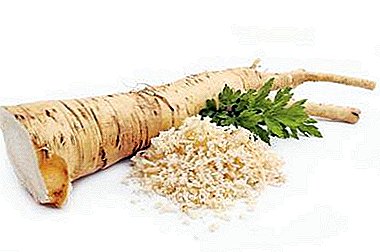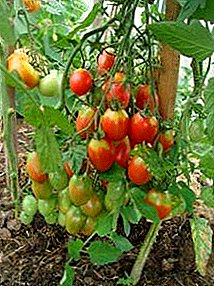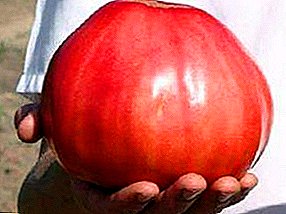
Geranium is considered one of the most famous indoor plants. There are many varieties and types of this plant. Care for geraniums is not difficult.
But it happens that the flowering is observed, and the leaves on the flower with little. The solution may be hiding even in the most unexpected places.
What is the cause and how to eliminate this error? More will be described in the article below.
Features of growth and flowering
In the care of geranium unpretentious, as in natural conditions in the place where the flower grows climatic conditions are extremely harsh.
Geranium flowering also depends on a number of factors. Especially on how the flower spent the winter. In winter, the plant needs cool air and no heaters., the temperature in the room where geranium stands must correspond to + 12-13 degrees, not higher. At the same time the plant does not require abundant watering and fertilizing.
By ensuring these conditions, geranium will not get sick and will please its owners with abundant flowering, which can last from spring to late autumn.
Another important condition for good flowering is the fact that the plant must necessarily break off the faded blossoms. These actions prolong the flowering period.
Geranium has long been successfully used in landscape design. due to its attractive properties. Namely:
- Because of its bright, colorful and abundant flowering.
- The leaves of geranium are openwork, depending on the species have different shades.
- Shrubs of various heights, from 10 cm to 1 meter, due to this, you can create different compositions in a flowerbed or garden plot.
Why it happens
If geranium blooms well, but the leaves do not grow on it, then there is a reason for it, therefore, it is necessary to understand why this is happening and fix the problem. Geranium leaves may fall off and expose the stem as a result of the following reasons.:
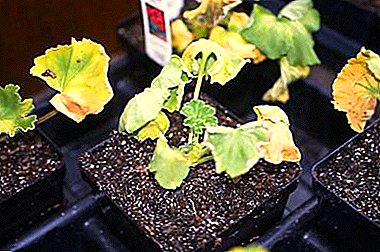 Due to drying out.
Due to drying out.- Due to fungal infection (most often as a result of Botrytis activity).
- As a result of rust damage.
- Because of the disease - spotting.
- Due to swelling.
Leaves dry from lack of moisture and light. Yellowing or whitening occurs on the background of too warm environment or sparse watering.
The fungus infects geraniums because of too frequent watering. Rust appears on geraniums because of the same fungal infection. Spotting occurs against the background of super-humidity in the room and high air temperature.
Swelling may occur when:
- Excessive watering.
- Reduced air temperature.
- Cold soil.
What to do?
You can fix these problems as follows.:
- Injured and dried leaves must be removed immediately.
- If the cause of the disease is known, it should be eliminated.
Medicines against many plant afflictions include:
- Fungicides - they effectively fight the fungus.
- Messenger - able to increase the protective forces of geraniums.
detailed instructions
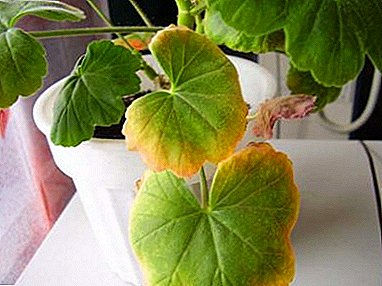 When leaves die out:
When leaves die out:
- Geranium is transferred to a well-lit place. Proper air temperature is also required. It should be moderate, about 20 degrees, and in winter - 13-15 degrees, but should not fall below 12 degrees.
- Watering the plant is necessary as the soil dries. In spring and summer, watering should be abundant to keep the soil moist, in winter - about once every 10 days.
When yellowing and whitening leaves:
- It is necessary to pay attention to the size of the pot, although geranium is a rather picky plant, but it is not recommended to grow it in absolutely any pot. Problems with the color gamut of the leaves can be caused just by the lack of necessary space for the root system to develop fully. In this case, it is better to take a pot size of 25-40 cm.
- It is necessary to completely eliminate the watering of the flower, so that only the top layer of soil is wet. When the improvements in the condition of the flower become noticeable, you can moderately begin to water again.
- No need to get involved in the use of various fertilizers, especially nitrogen-containing. Be sure to follow the instructions on the package. In the summer, potassium is introduced into the soil, and in the winter, it is better to completely abandon fertilizers.
When infected with the fungus Botrytis:
- With the defeat of this fungus in geranium you need to remove all the affected areas and dried inflorescences. Treatment with fungicides is necessary, for example, Alirin-B.
- When watering, you can add 5% solution Bordeaux mixture.
If leaves are damaged with rust:
- rearrange the flower in a cool and dry place;
- minimize watering and eliminate spraying;
- get rid of diseased leaves;
- process the flower with Topaz (1 time per week).
Treatment should begin as early as possible, even before blackening appeared.
Spotting The cause of spotting is high humidity. To eliminate the disease, it is necessary to treat the flower with the fungicides Gamair or Glyocladin. Processing should be done every 2 weeks until the problem disappears.
Swelling is eliminated by eliminating the reasons for its occurrence.. If it is abundant watering, then it is reduced. With low air temperature and soil, the plant is transferred to a more comfortable environment.
Preventive measures
Most often, the absence of leaves on the geranium in the presence of flowering is associated with errors in the care of the flower. Therefore, with the observance of preventive measures regarding the correct geranium content, the gardener will not face a similar problem.
Care is the following steps:
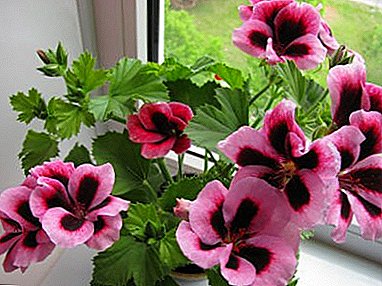 Observance of temperature. The plant likes fresh air, but not drafts.
Observance of temperature. The plant likes fresh air, but not drafts.- You should not overdry the substrate too much, but it is also contraindicated to flood it. Spraying the plant does not tolerate, as well as the neighborhood with moisture-loving flowers.
- Despite the fact that the plant loves bright sunlight, direct sunlight can sometimes have a destructive effect. Therefore, we must learn to take into account this circumstance. Geranium prefers to be on the south side of the room so that the sun’s rays will warm its leaves. But on lunch hot days it is better to cover the plant with papyrus paper so as not to cause a burn.
- Feeding is better to carry out both before the appearance of flowers, and during flowering. Fertilizers are also worth making in the winter and autumn time once a month, in the summer and spring time - twice a month.
- Need to timely eliminate pests. Geranium is attacked more often by the rest of such parasites as aphid, whitefly and mealybug.
- Regularly trim the geranium bush.
Despite the fact that the plant does not require special and careful care, some errors in its cultivation can lead to a number of problems. One of them - the flowering of geraniums in the presence of foliage. By eliminating the reason for this circumstance in a timely manner, it will be possible to enjoy a harmonious combination of leaves and flowers by the plant.


 Due to drying out.
Due to drying out. Observance of temperature. The plant likes fresh air, but not drafts.
Observance of temperature. The plant likes fresh air, but not drafts.
